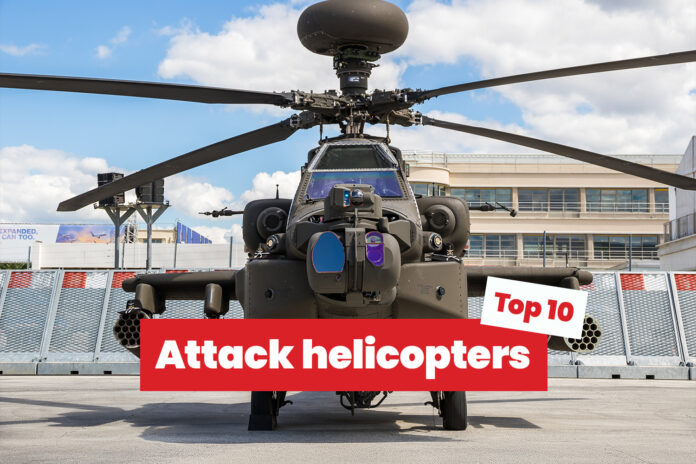According to the World Air Forces 2025 directory, more than 20,000 attack helicopters are in service in 2025. The most used are the Sikorsky S-70-based variants, the UH-60 Black Hawk and SH-60 Seahawk with almost 4,000 units in service.
While the S-70 is a versatile platform loved by forces the world over, it’s not the most advanced attack helicopter on the planet. Newer, more combat-focused models bring faster speeds, longer range, and more deadly armaments.
The most advanced attack helicopter in the world in 2025 is the Apache Guardian, officially the Boeing AH-64E. Armed to the teeth, pilots are cocooned in a titanium-plated cockpit, with a visually controlled gun, hellfire missiles, and Hydra rockets at their disposal.
The Apache is given a run for its money by some of the other deadly attack helicopters on our list. Stay with us as we take a look at the 10 most advanced attack helicopters in service in 2025.
Top 10 world’s most advanced attack helicopters in service in 2025
- AH-64E Apache Guardian
- Mil Mi-28NM Havoc
- Bell AH-1Z Viper (Cobra?)
- Eurocopter Tiger
- TAI T129 ATAK TAI
- Kamov Ka-52
- Agusta A129 Mangusta
- Mil Mi-24
- Changhe Z-10
- Denel Rooivalk
1: AH-64 Apache
| AH-64E key specifications | |
| Origin | US |
| Manufactured | 1975 – present |
| Number built | 5,000+ |
| Top speed | 150+ knots |
| Range | 260 nmi |
| Armaments | 16 HELLFIRE missiles; 76 2.75-inch rockets and 1,200 30mm chain gun rounds |
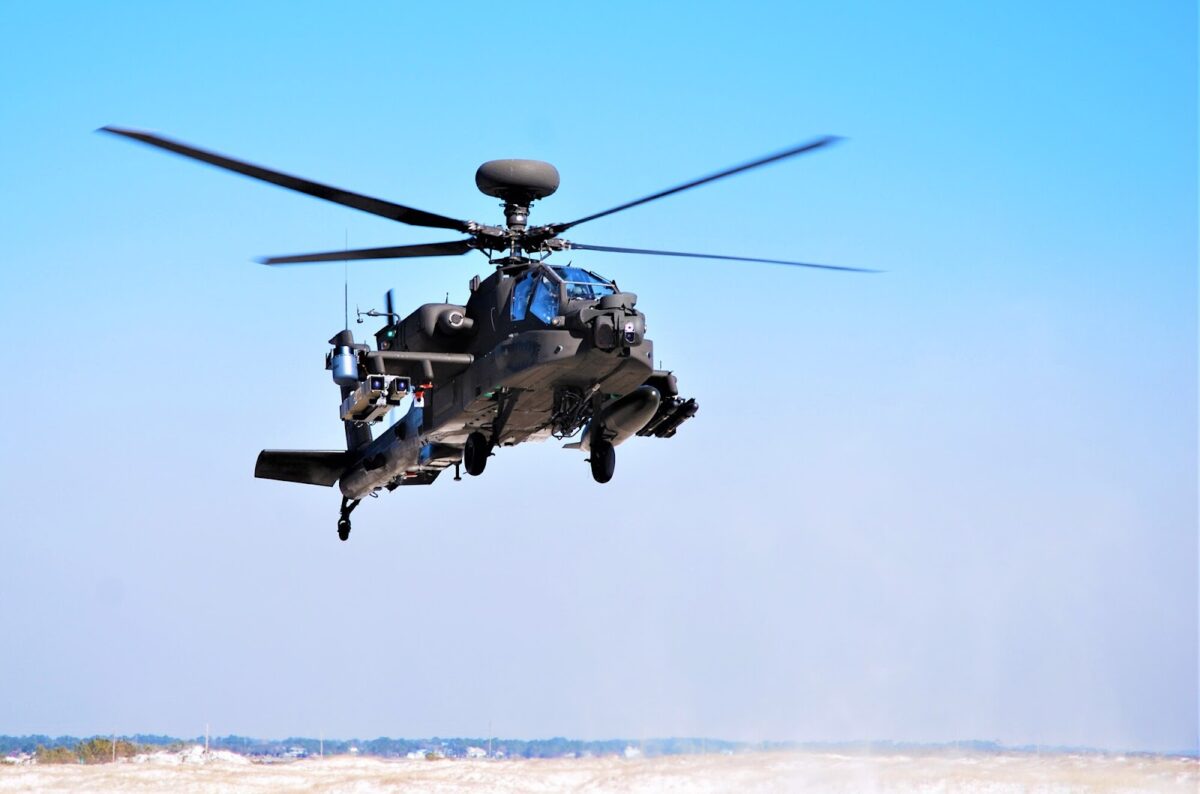

The US Army’s workhorse, the Apache is the most numerous and widespread attack helicopter of the Western world and its allies. The most experienced and proven attack helicopter in the world, the Apache has seen action in every major American and NATO conflict since its introduction.
In US Army service, the Apache line (A- to E- model) has accumulated more than five million flight hours, and more than 1.3 million hours in combat. It’s the third most used attack helicopter in the world with 1,225 units in service.
The AH-64E Apache Guardian is the newest variant of the AH-64 Apache attack helicopter series. Based on the D model, it has integrated several advanced features including:
- Advanced digital connectivity
- Joint Tactical Information Distribution System
- More powerful T700-GE-701D engines with upgraded face gear transmission to accommodate more power
- Capability to control unmanned aerial vehicles (UAVs)
- New composite main rotor blade
You’ll find the Apache in air forces around the world, including Egypt (D model, 46), Greece (A/D models, 29), India (E, 22), Israel (A/D, 48), China (E, 29) and the UAE (D/E, 30). But by far the biggest operator is the US, with 824 Apaches in service with the army. Nations joining the operators of the AH-64 include Australia with 29 on order, Poland with 96 and Morocco with 24.
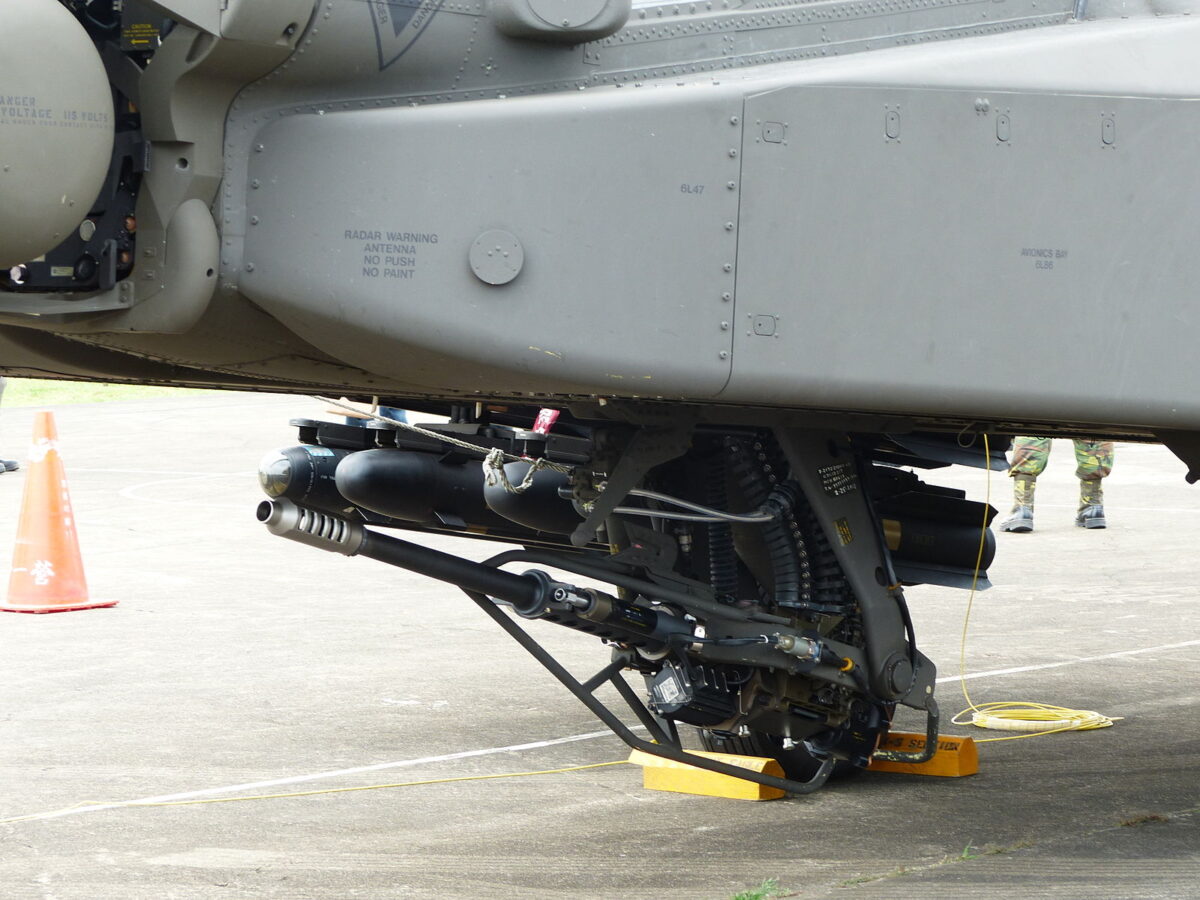

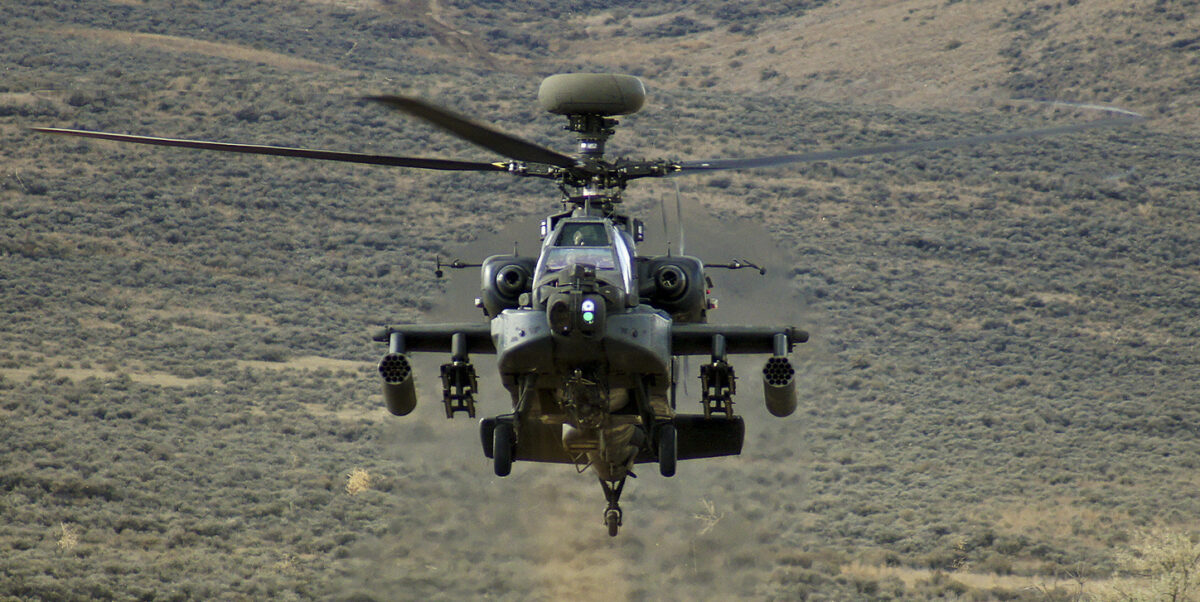

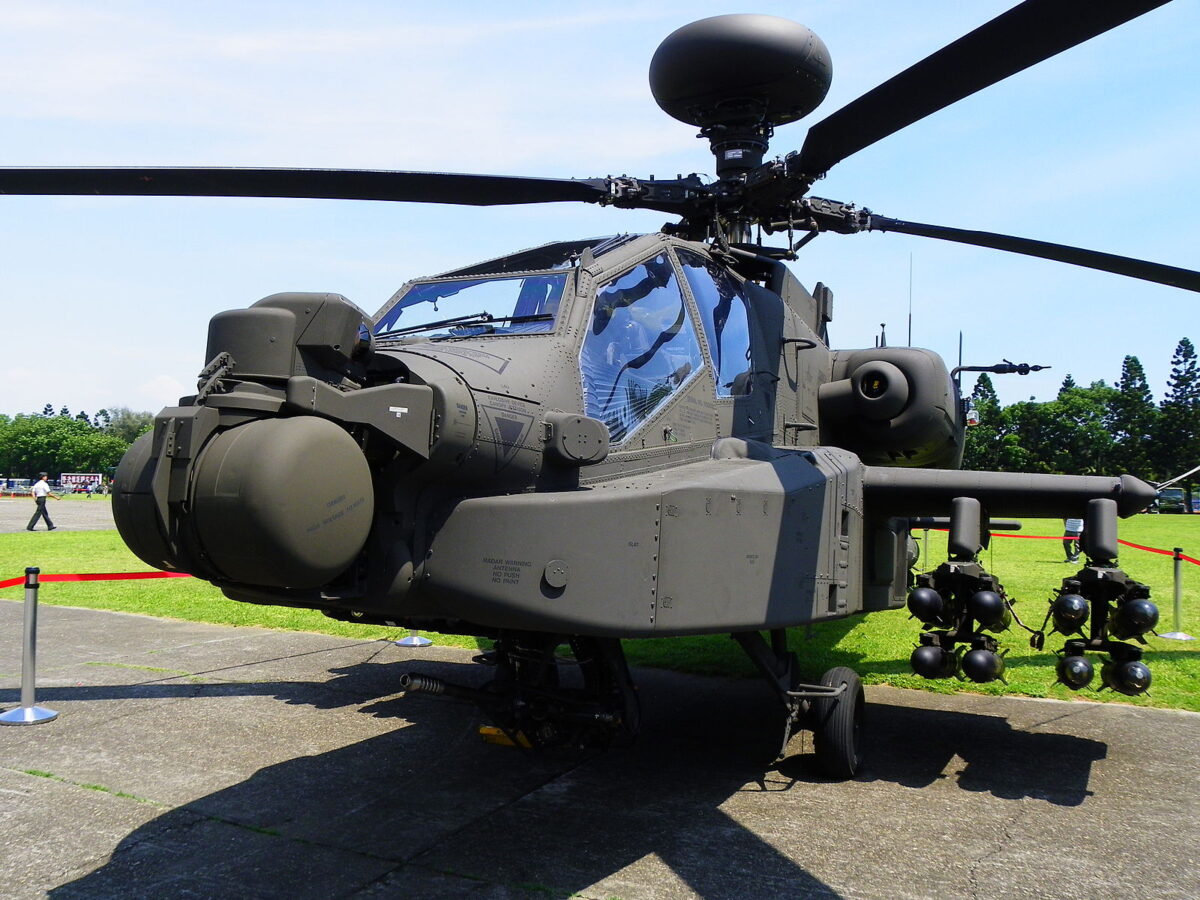

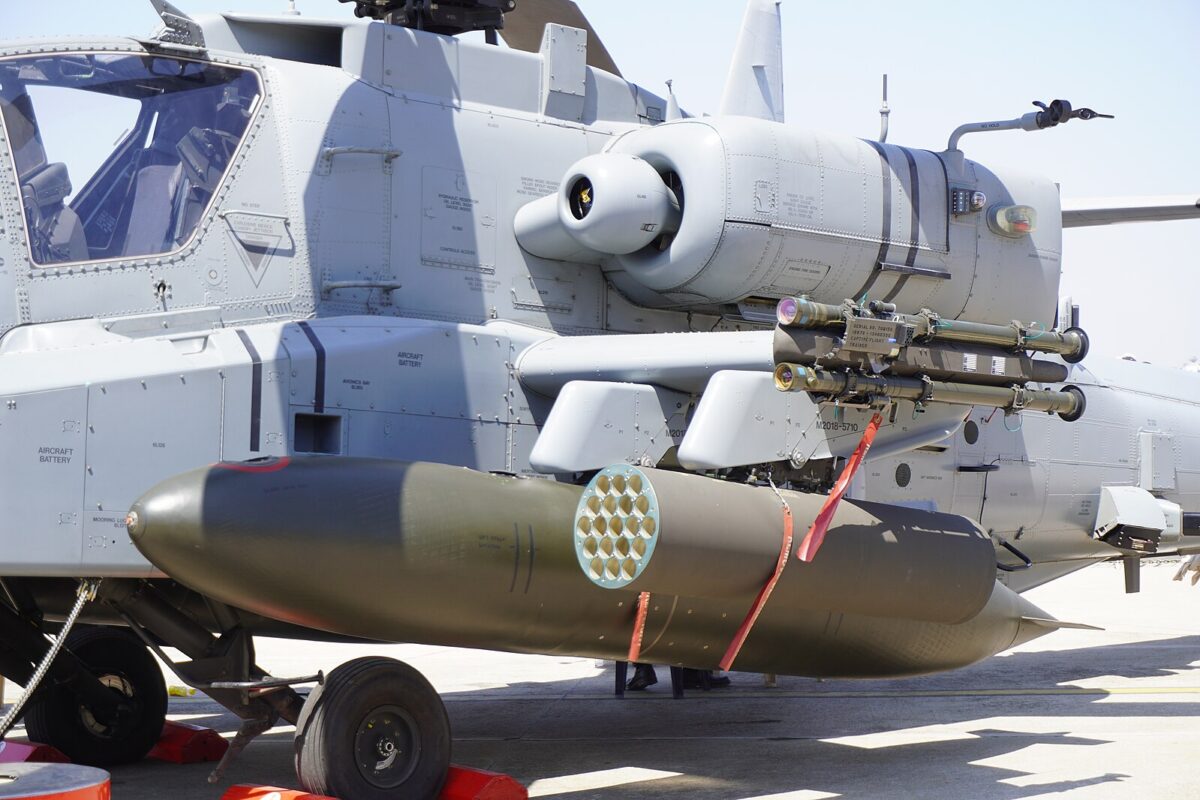

The AH-64E is heavily armed, with a 30mm M230 chain gun with 1,200 rounds – when used with the helmet-mounted display, the pilot can aim the gun just by looking. It has four hardpoints that typically carry AGM-114 Hellfire missiles and 70mm Hydra rockets. It can also carry air-to-air Stinger missiles to counter UAVs and low-flying aircraft.
The latest Apache is also equipped to control UAVs (drones) and has advanced targeting and sensor systems to let the pilots see further and track multiple targets at once. It’s heavily armored, with bulletproof glazing and ballistic cockpit armor made from titanium.
Despite its 50-year heritage, the Apache has been constantly upgraded and refined to keep it relevant in the modern battlefield. However, the AH-64E is the last of the line, with the US Army saying they will continue purchasing the -E until it’s time to switch to a ‘Future Vertical Lift’ aircraft.
2. Mil Mi-28 Havoc
| Mil Mi-28 key specifications | |
| Origin | Russia |
| Manufactured | 1982 – present |
| Number built | 172 |
| Top speed | 170 knots |
| Range | 235 nmi |
| Armaments | 30mm Shipunov 2A42 cannon, optional rocket pods/gun pods/cannon pods |
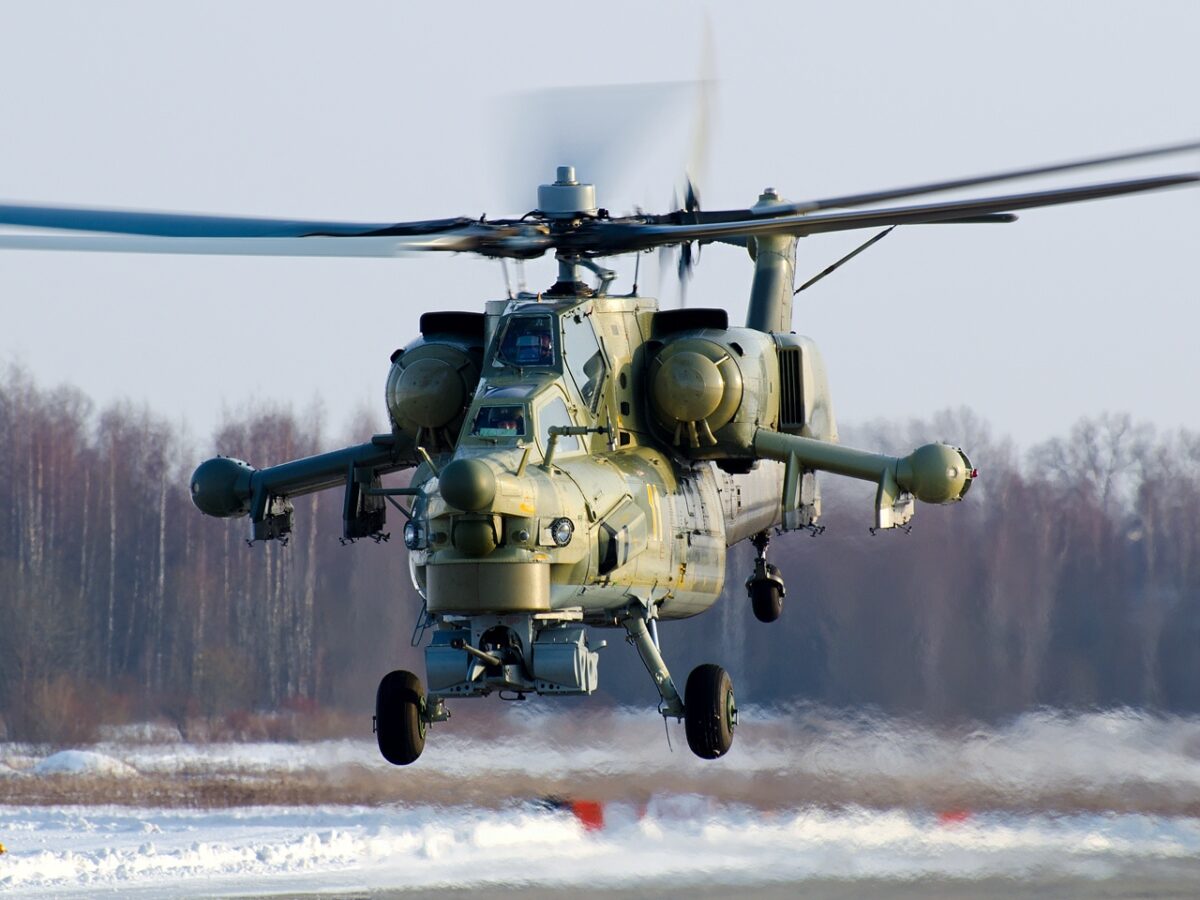

Russia’s answer to the AH-64 Apache, the Mi-28 Havoc is rugged, heavily armed and built for combat. Designed in the 1980s as a tank buster, it wasn’t entered into service until 2009, a full 27 years after its first flight. Still, its ethos as an anti-armor war machine makes it a direct competitor to the Apache, and a formidable aircraft.
Armed with 16 anti-tank guided missiles (ATGM) which can penetrate over 800mm of armor, it can also carry rocket pods, bombs and gun pods. It sports the same 30mm Shipunov 2A42 autocannon as the Ka-52 – number six on our list – and has a bulletproof windshield and titanium reinforced cockpit.
Unusually, it has a tandem two seat cockpit in a unique configuration – the pilot sits at the back. As well as the gunner up front, the pilot also has full weapons control, giving it more flexibility than western designs.
Although, on paper, it should be a good competitor to the Apache, its penetration in air forces is limited. Russia is the primary operator with 113, while Iraq has 17 and Algeria sports a fleet of 42. It has been used in Syria and currently in Ukraine but has suffered heavy losses at the hands of Ukrainian MANPADS.
3. Bell AH-1Z Viper
| Bell AH-1Z key specifications | |
| Origin | US |
| Manufactured | 2000 – present |
| Number built | 195 |
| Top speed | 222 knots |
| Range | 370 nmi |
| Armaments | 20mm rotary cannon, optional Hydra or APKWS rockets, optional A2A or A2S missiles |
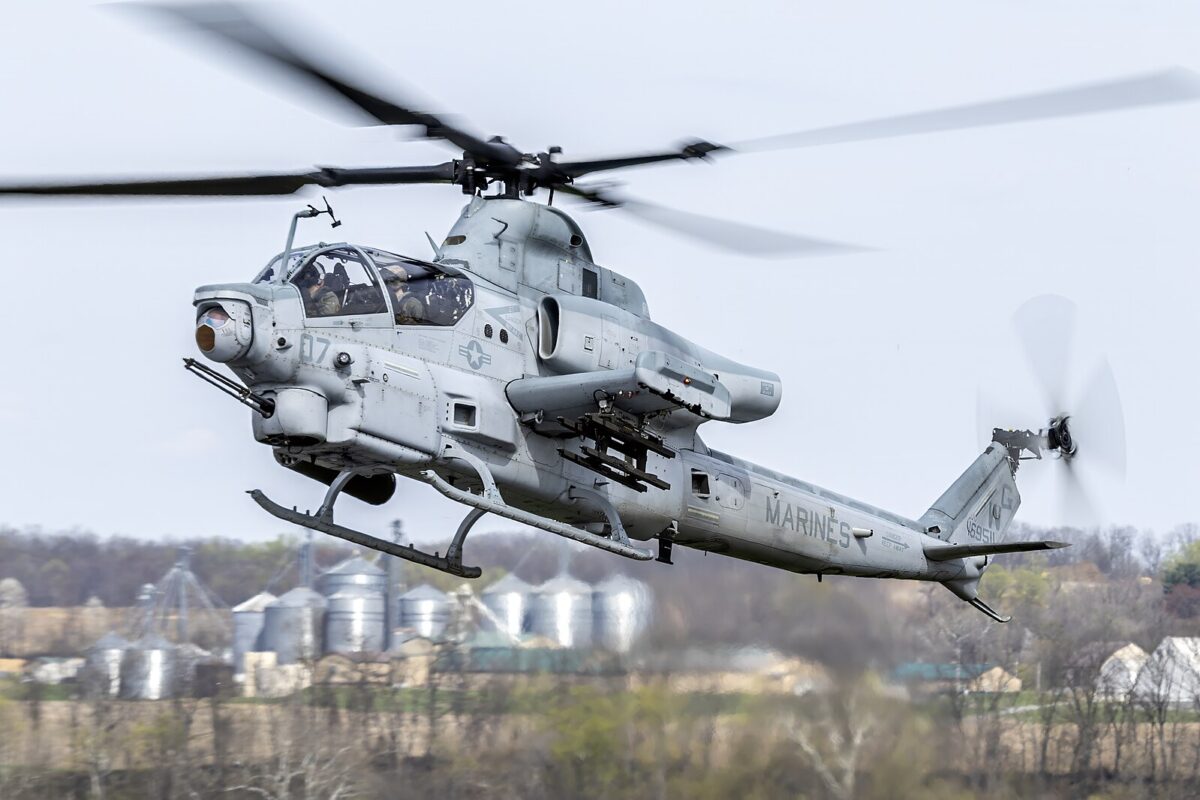

The American Viper is a third-generation descendant of the venerable Bell AH-1 Cobra, the grandfather of all modern attack helicopters. While the Viper retains the Cobra’s DNA, it has had some major 21st century upgrades.
Most noticeable is its unique four-blade rotor system, made of composite materials for lightweight durability. This upgrade makes the Viper faster, more agile and a much smoother ride than the original two-blade Cobras.
The AH-1Z Viper is heavily armed, with a total of six hardpoints capable of carrying more than 5,700 lbs of armaments. These can include up to 76 unguided Hydra rockets or 38 APKWS guided rockets, as well as Sidewinder, Hellfire or JAGM missiles.
The US Marines have a fleet of 178 AH-1Z, according to the 2025 World Air Forces directory. Bahrain has bought and received 12 AH-1Z, and the Czech Air Force has ten. This powerful attack helicopter is expected to be in service until at least 2040, with continuous upgrades planned.
4. Eurocopter Tiger
| Eurocopter Tiger key specifications | |
| Origin | Multinational |
| Manufactured | 1991 – present |
| Number built | 195 |
| Top speed | 160 knots |
| Range | 430 nmi |
| Armaments | 30mm turret cannon, optional rocket, missile and gun pods |
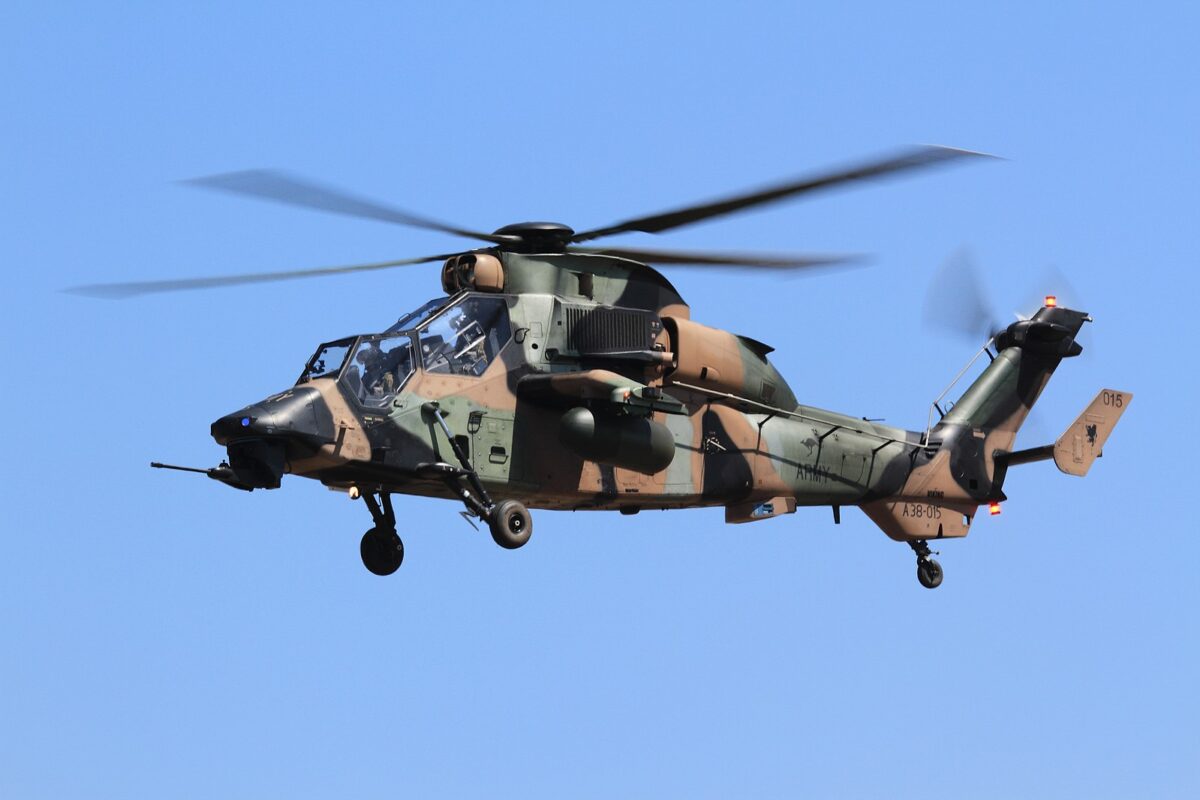

A joint Franco-German development, the Eurocopter Tiger is the second and the most recent attack helicopter to emerge from Western Europe. Developed initially during the Cold War, the program ran on after the war had ended and became stalled. It finally entered into service in 2003, much later than initially anticipated.
The Tiger has different variants for different forces and their specific requirements. For example:
- Tiger HAP (French) – Multi-role attack helicopter with a 30mm cannon, rockets, and Mistral air-to-air missiles
- Tiger UHT (German) – Specializes in long-range anti-tank warfare, equipped with PARS 3 LR and HOT-3 missiles, but lacks a chin-mounted gun
- Tiger ARH (Australian) – Adapted for reconnaissance and fire support, equipped with Hellfire missiles
- Tiger HAD (Upgraded French / Spanish) – A more powerful and heavily armed version with better armor and Spike ER missiles
The Tiger was one of the first attack helicopters to feature stealth technology, including radar-absorbing materials and a low infrared signature. Its lightweight composite fuselage and advanced rotors make it one of the fastest and most agile attack helicopters in service.
5. TAI T129 ATAK
| TAI T129 ATAK key specifications | |
| Origin | Italy / Turkey |
| Manufactured | 2009 – present |
| Number built | 100 |
| Top speed | 152 knots |
| Range | 290 nmi |
| Armaments | 20mm three-barrel rotary cannon, optional rocket and missile pods |
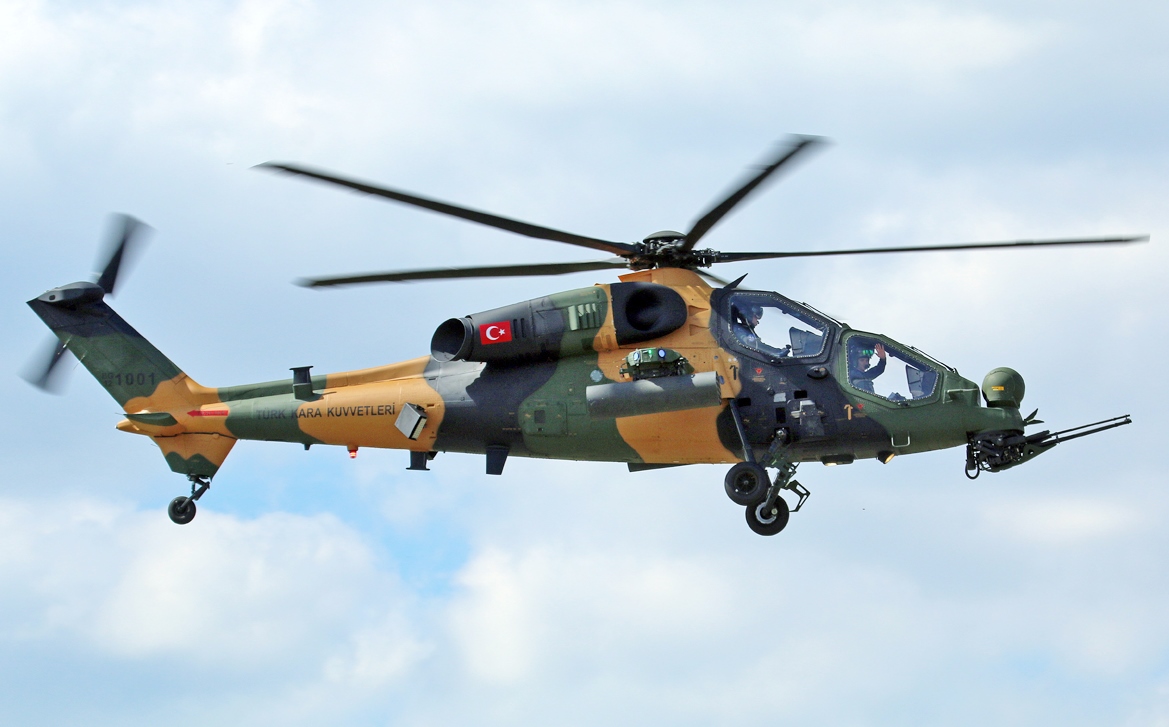

Based on the A129 Mangusta – the seventh most advanced attack helicopter on our list – the T129 ATAK is a significantly upgraded version. Working with AgustaWestland, Turkish Aerospace Industries (TAI) added a new engine, improved avionics, better weapons and enhanced durability.
A key requirement of the ATAK is good performance in hot and high-altitude environments, essential to Turkey’s mountainous terrain and climate. Performance is delivered through a pair of LHTEC CTS800 power plants, enhanced rotor blades and improved cooling systems.
It has a more powerful arsenal than the A129 too, with armaments including:
- 20mm three-barrel M197 Gatling gun (chin-mounted turret)
- Cirit 70mm laser-guided rockets (indigenous Turkish weapon, highly accurate)
- UMTAS anti-tank guided missiles (Turkey’s equivalent to the US Hellfire missile)
- Stinger air-to-air missiles for aerial threats
- Hydra 70mm unguided rockets
Primarily used by the Turkish forces, there has been plenty of interest in exporting the ATAK. However, this has been complicated by the inclusion of US-made LHTEC engines, leading to a sale to Pakistan being blocked. The Philippines became the first foreign operator in 2022, and Nigeria took two in 2023. Turkey is working on an indigenous engine – the TEI TS1400 – to avoid issues with sanctions in the future.
6. Kamov Ka-52 ‘Alligator’
| Kamov Ka-52 key specifications | |
| Origin | Russia |
| Manufactured | 1990 – present |
| Number built | 196+ |
| Top speed | 170 knots |
| Range | 294 nmi |
| Armaments | 30mm cannon, optional rocket, missile and gun pods plus optional 2,200 lb of bombs |
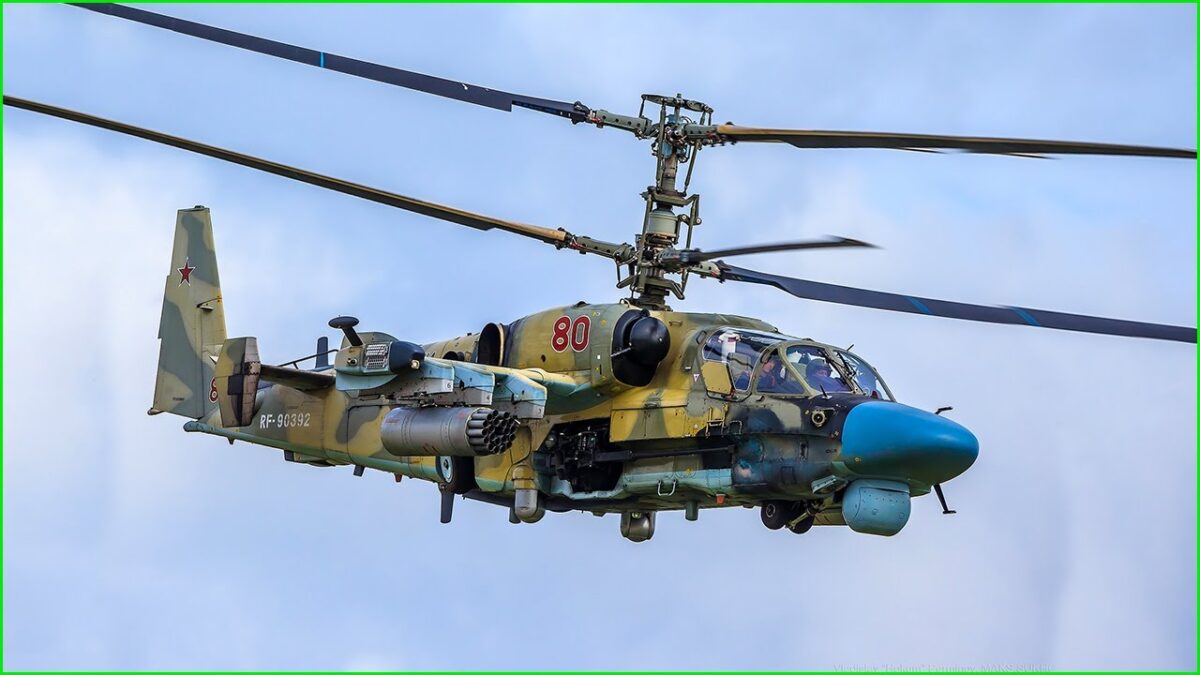

Probably the most unique attack helicopter in service today, the Ka-52 is a wildly unconventional design. It has dual contra-rotating main rotors, and no tail blades, known as a coaxial rotor system. This provides several advantages, including greater life, better survivability and increased agility. Indeed, it is one of the most maneuverable helicopters of any kind in the world today.
The original design, the Ka-50 ‘Black Shark’, was designed to be a single pilot attack helicopter. Advanced automation alleviated many of the typical pilot tasks, letting the pilot focus on flying and combat. However, in real-world operations, this proved to be challenging, leading to the development of the Ka-52 ‘Alligator’ two seat variant.
The Ka-52 has a titanium armored cockpit which can withstand 23mm rounds. Unusually, it also has an ejector seat, which is a rarity in rotary wing aircraft. Before ejecting, explosive charges blow off the rotor blades to allow the pilots to eject safely.
More than 196 units have been produced to date, and the type is in service with Russia’s air force and navy, as well as the Egyptian Air Force.
7. Agusta A129 Mangusta
| Agusta A129 Mangusta key specifications | |
| Origin | Italy |
| Manufactured | 1983 – present |
| Number built | 60 |
| Top speed | 150 knots |
| Range | 280 nmi |
| Armaments | 20mm turret cannon, optional rocket, missile and gun pods |
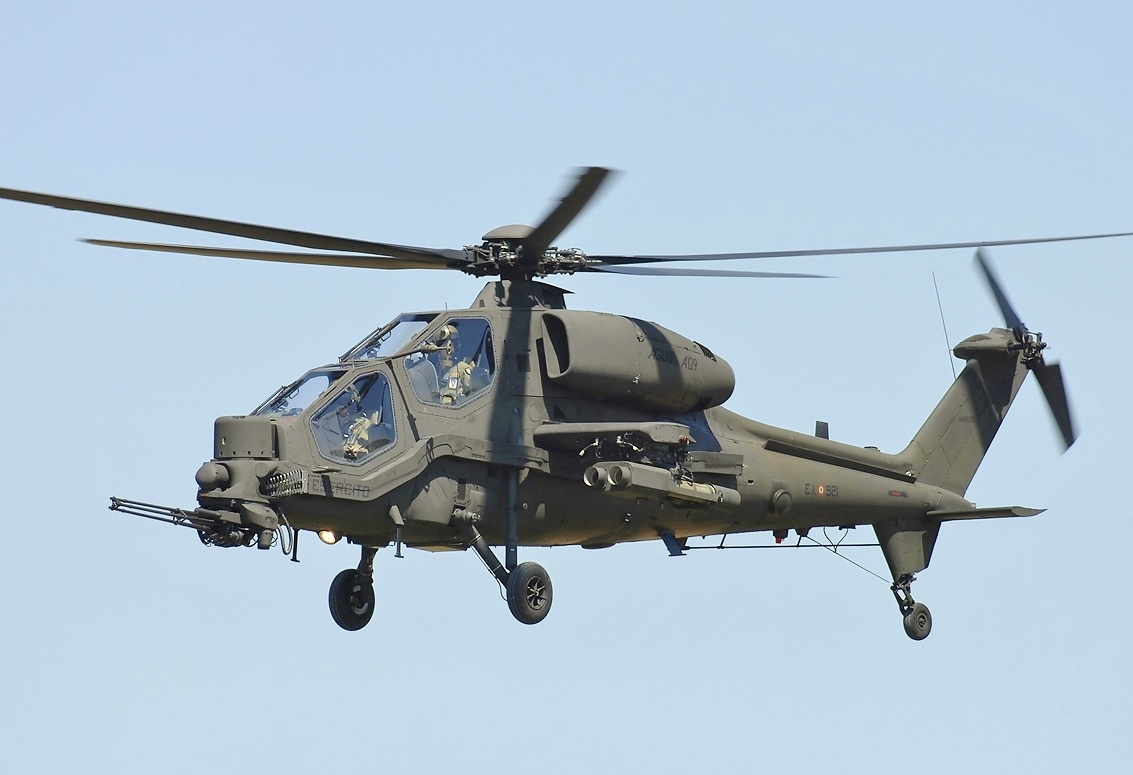

The A129 Mangusta (Italian for Mongoose) holds the distinction of being Western Europe’s first domestically manufactured attack helicopter. It’s also the first helicopter to make use of a full computerized management system to reduce crew workload, with much of the functionality automated.
Designed as an anti-tank helicopter, it was equipped with tube-launched, optically tracked, wire guided missiles (TOW) which were highly effective against armored targets. It’s light, agile and more maneuverable than other attack helicopters, giving it an advantage in complex airspace environments.
Although it was designed for anti-tank warfare, later the Mangusta was modified to carry out other rules including reconnaissance, escort and fire support. It’s a heavily armored chopper, with a 20mm M197 three-barrel Gatling gun mounted in a turret, TOW or Spike anti-tank missiles, Stinger or Mistral air-to-air missiles and hydra 70mm rockets.
Despite its capabilities, only 60 units were built for the Italian Army, making it one of the rarer attack helicopters on this list.
8. Mil Mi-24 Hind
| Mil Mi-24 key specifications | |
| Origin | Russia |
| Manufactured | 1969 – present |
| Number built | 2,648 |
| Top speed | 181 knots |
| Range | 240 nmi |
| Armaments | 127mm 4-barrel machine gun, anti-tank missiles, rocket pods, bomb payload |
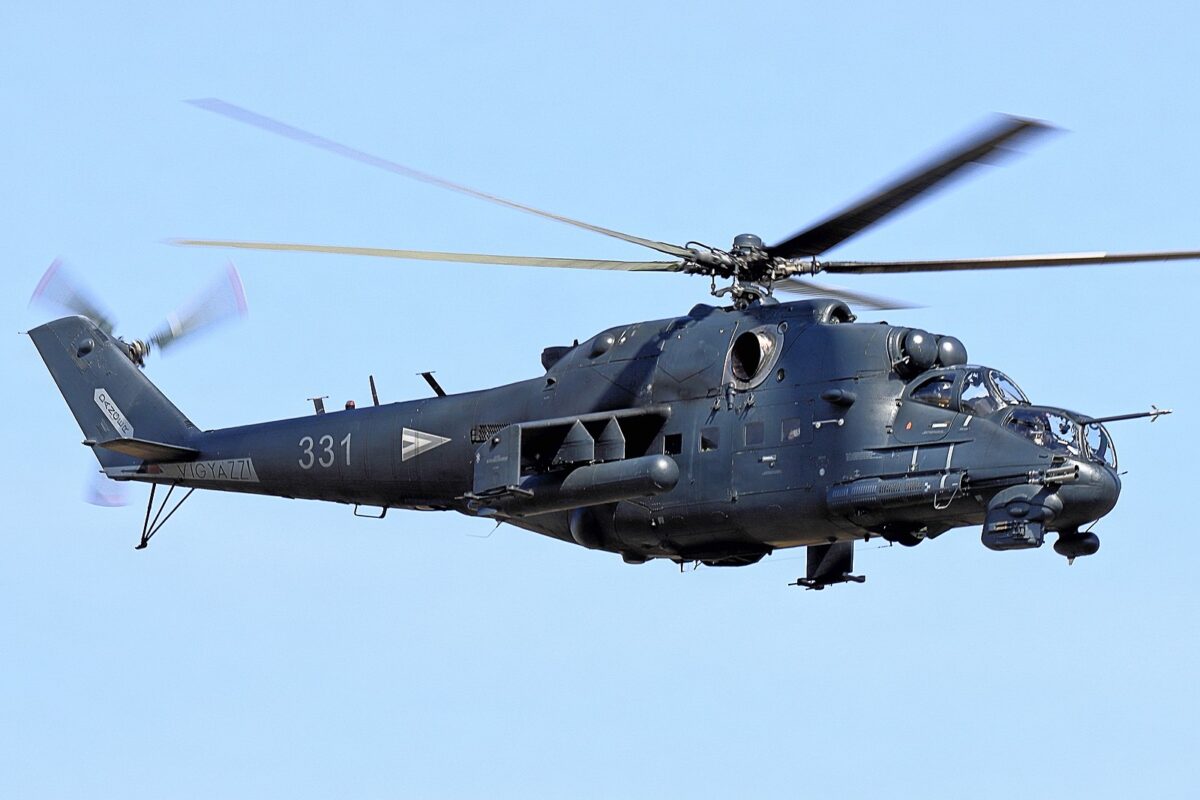

For over 50 years, the Mi-24 has been a formidable Russian gunship, and was the most heavily armed attack helicopter of the Cold War. Developed as an anti-tank attack helicopter, its versatility has kept it relevant as the world has changed around it.
Notably, the Mi-24 can serve as both a heavily armed attack helicopter and a flying troop transport. Up to eight passengers can be transported in the rear cabin, meaning once the Mi-24 has eliminated ground threats, it can deposit a troop of infantry right into the battlefield. It was the only Cold War helicopter capable of this.
Used in combat many times over the years, some of the Hind’s most notable battlefields include the Soviet war in Afghanistan (1979 – 1989), the Iran-Iraq war (1980-1988), the War in Afghanistan (2001 – 2021) and the ongoing Russian invasion of Ukraine.
With over 50 operators worldwide and a production count exceeding 2,600 units, the Mi-24 holds the record as the most manufactured attack helicopter in history.
9. Changhe Z-10
| Changhe Z-10 key specifications | |
| Origin | China |
| Manufactured | 2003 – present |
| Number built | 208 |
| Top speed | 160 knots |
| Range | 430 nmi |
| Armaments | 23mm revolver cannon, optional rocket and missile pods, optional guided bombs |
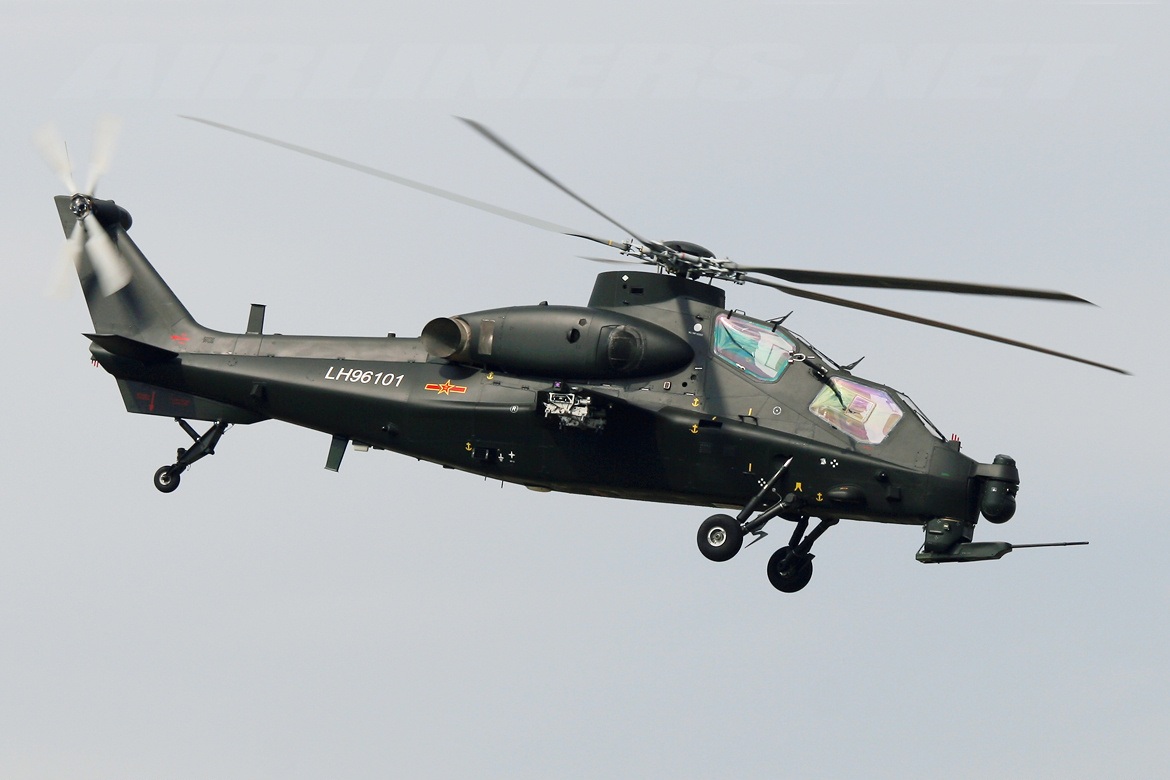

This 4.5-ton armed helicopter was built both as an anti-tank aircraft and as a capable air-to-air combat platform. It is the first indigenous attack helicopter produced in China, arguably in response to the AH-64 Apache. While its range is greater than that of the Apache, it isn’t as fast, although it does pack some firepower.
As well as a 23mm PX-10A revolver cannon, the helicopter has four hardpoints with a combined capacity of more than 3,300 lbs of extra munitions. These can include various rockets, laser-guided air-to-surface missiles, air-to-air missiles and guided bombs.
So far, more than 200 have been produced for the People’s Liberation Army, but foreign buyers remain elusive. China debuted the Z-10 at the Singapore Airshow in 2024, the first time the type has been displayed outside of China. The Pakistan Army Aviation Corps has reportedly ordered 40, with the first batch delivered in 2023.
10. Denel Rooivalk
| Denel Rooivalk key specifications | |
| Origin | South Africa |
| Manufactured | 1990 – 2007 |
| Number built | 15 |
| Top speed | 150 knots |
| Range | 400 nmi |
| Armaments | 20mm cannon, anti-tank missiles, air-to-air missiles, 70mm rockets, laser guided rocket |
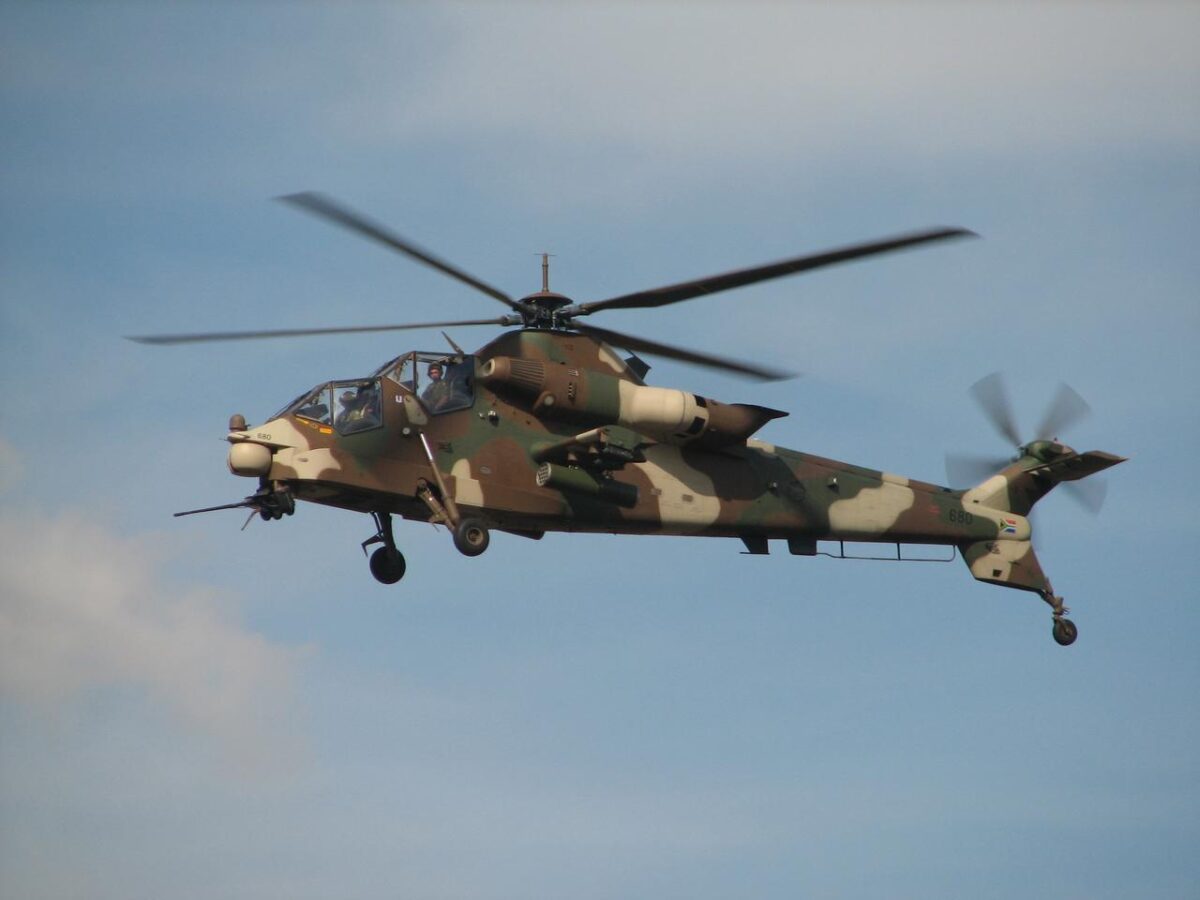

South Africa’s homegrown attack helicopter was designed to be a multi-tasker. The Denel Rooivalk (red falcon) was developed at a time when South Africa was under an arms embargo and couldn’t import foreign attack helicopters. With the threat of the South African border war at their door, the nation wanted a helicopter to escort helicopter troops, conduct strike missions and provide anti-tank support.
The Rooivalk has powerplant and dynamic systems based on the Aérospatiale AS332 Super Puma, giving it a large airframe, long range and plenty of room for sensors and armaments. The finished helicopter can carry a range of weapons depending on the mission profile. It is generally fitted with a nose-mounted 20mm cannon and can also carry air-to-air missiles, anti-armor missiles and guided rockets.
The Rooivalk saw its first combat with the South African Air Force (SAAF) in support of the United Nations Force Intervention Brigade in the Democratic Republic of the Congo during 2013. In total, 12 were built for SAAF (although one was lost in an ‘uncontrolled landing’) alongside three demonstrators, one of which is on display at the South African Air Force Museum, Swartkop Air Force Base, Pretoria.

